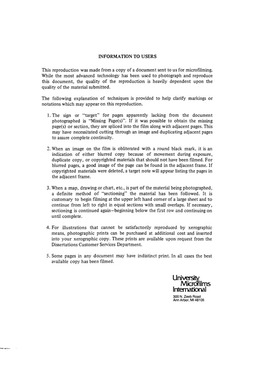| dc.contributor.author | Smith, Earlene Heaton, | en_US |
| dc.date.accessioned | 2013-08-16T12:29:20Z | |
| dc.date.available | 2013-08-16T12:29:20Z | |
| dc.date.issued | 1985 | en_US |
| dc.identifier.uri | https://hdl.handle.net/11244/5330 | |
| dc.description.abstract | During the past two decades the academic health center has emerged as an organizational entity defined by the Association of Academic Health Centers as "a medical school, a teaching hospital, and at least one additional program." Many programs that provide for the education and training of the health professionals are not associated with higher education institutions. The purpose of this study was to locate the existing academic health centers that are a part of a university system in the United States and to identify the programs that culminate in a baccalaureate degree or higher. This study has generated and tested a method of investigating these centers in terms of their geographic location, size, and control. Since the literature conclusively supports the health care team concept as a most appropriate approach to practice in the health delivery system today, a conceptual model academic health center was designed as a subsystem of a university to include those programs deemed most essential for its completeness in relation to the health professions most essential in the health care team. | en_US |
| dc.description.abstract | The conclusion of this study recommends a broader definition of an academic health center to be "an educational community of essential health profession disciplines located within an institution of higher education with multiple hospital affiliations." | en_US |
| dc.description.abstract | A questionniare was developed specifically for this research and mailed to the chief administrative officer at each of the 108 medical schools that are a part of a university system in the United States. There were 83 repondents for a 77 percent return rate. The data were analyzed using the T-test of Means; Spearman Rank-Order Correlation test; and the Pearson R, Spearman Rho, and Kendall Tau Correlation Coefficient tests. Findings revealed eight health profession programs that showed a significant relationship at the .05 level of significance to the health professions in the health care team. These were dentistry, medical technology, medicine, nursing, pharmacy, physical therapy, radiography, and respiratory therapy. The model was designed with three divisions: undergraduate, graduate, and professional. The location of the minimum eight health profession programs was dictated by the level of degrees awarded upon completion of the specific programs of study. | en_US |
| dc.format.extent | xiii, 156 leaves : | en_US |
| dc.publisher | The University of Oklahoma. | en_US |
| dc.subject | Medical education Study and teaching. | en_US |
| dc.subject | Health Sciences, Education. | en_US |
| dc.title | Scope of programs in academic health centers in higher education / | en_US |
| dc.type | Thesis | en_US |
| dc.thesis.degree | Educat.D. | en_US |
| dc.note | Source: Dissertation Abstracts International, Volume: 46-05, Section: B, page: 1502. | en_US |
| ou.identifier | (UMI)AAI8514203 | en_US |
| ou.group | Jeannine Rainbolt College of Education | |
